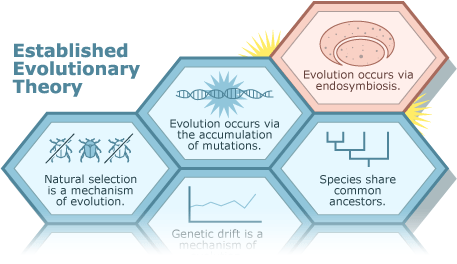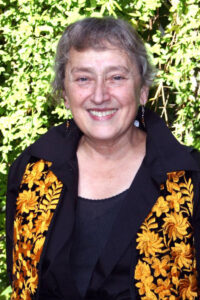Margulis may have been wrong about tubule organelles resulting from endosymbiosis — many biologists think that this part of her hypothesis is not supported by the evidence — but her ideas have still made one of the most tremendous contributions to evolutionary biology of the last hundred years. She didn’t overthrow any of the core ideas of evolution, but she did force some of them to move over and make room for modifications! Margulis established that genetic mutations are not the only source of new traits in life and that competition is not the only strategy that living things can employ to get ahead in the evolutionary game. Through symbiosis, distantly related organisms can cooperate to form an entity more fit than the individual species involved, and over time, that relationship can grow so intimate that what was once two or three distinct species becomes one. Today, biologists accept the idea that this sort of endosymbiosis is common.

In the end, powerful evidence is what gave Margulis’ hypothesis validity, but part of the battle was won with persistence and time. Evidence is always the most important factor in the acceptance of scientific ideas, but science doesn’t happen in a vacuum, and many other factors can affect the pace of its progress. New ideas, or ones that seem to stray far from accepted theory, face greater obstacles to acceptance than more familiar ideas. This can make scientific knowledge slow to change — but that may not be a bad thing. This kind of skepticism ensures that new hypotheses are tested rigorously, with multiple lines of independent evidence, before the scientific community gets behind them. However, it’s important to note that all ideas in science must be testable so that evidence regarding their validity can be gathered — even if that process takes decades.

Lynn Margulis’ story of discovery shows us how scientific ideas change over time. What began as a fringe hypothesis that couldn’t be tested with the tools of the 19th century was revived and expanded by Margulis when the appropriate technology for testing began to be developed. With it, she convinced the scientific community that the evidence was strong enough to take a strange idea about endosymbiosis seriously. Through the efforts of many scientists working in a range of fields, the idea was tested until the toughest critics had to agree that, at least for mitochondria and plastids, the idea was correct.
Margulis’ tenacious work on this hypothesis changed the way scientists understand how evolution works and inspired a whole new world of questions: Did any cellular features besides mitochondria and plastids evolve via endosymbiosis? How did an endosymbiont’s DNA wind up in the host cell’s nucleus? How often does this DNA transfer occur? Is the transferred DNA usually beneficial, harmful, or neutral? How has this process affected genome evolution? As scientists in many different fields seek answers to such questions, we are slowly building a better understanding of the key roles that endosymbiosis and cooperation have played in the evolution of life on Earth.
Popular and historical account:
- Hagen, J. 1996. Lynn Margulis & the question of how cells evolved. Doing Biology. Glenview, IL: Harper Collins.
A few scientific articles:
- Gray, M. W., and Doolittle, W. F. 1982. Has the endosymbiont hypothesis been proven? Microbiological Reviews. 46: 1-42.
- Gray, M. W. 1983. The bacterial ancestry of plastids and mitochondria. BioScience. 33: 693-699.
- Margulis, L. 1970. Origin of Eukaryotic Cells. New Haven, CT:Yale University Press.
- Sagan, L. 1967. On the origin of mitosing cells. Journal of Theoretical biology. 14: 225-274.
